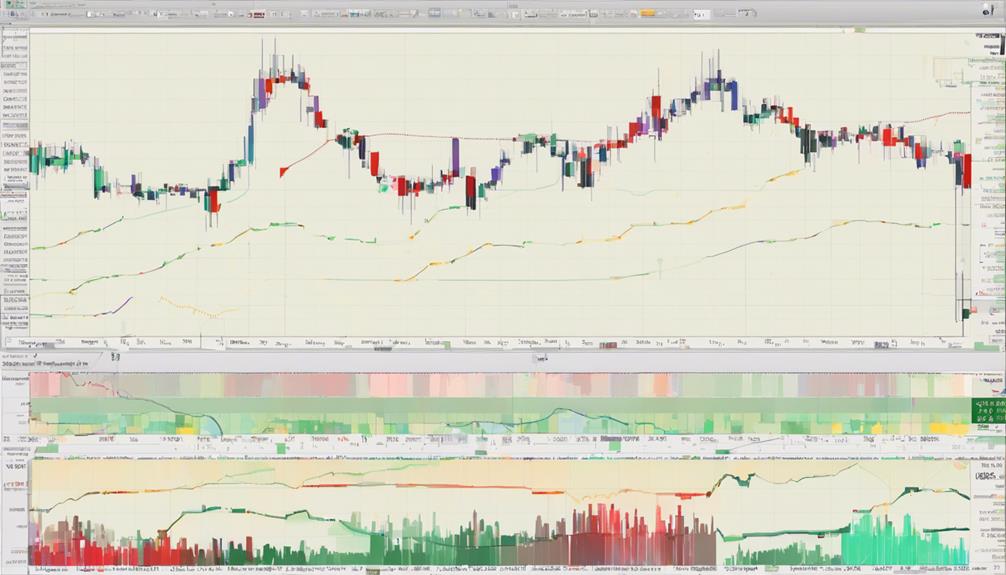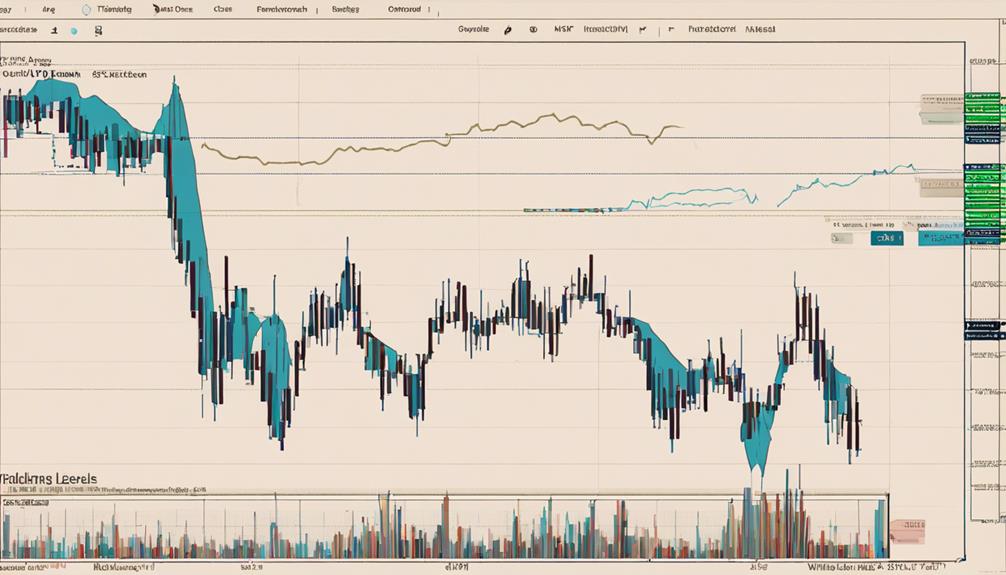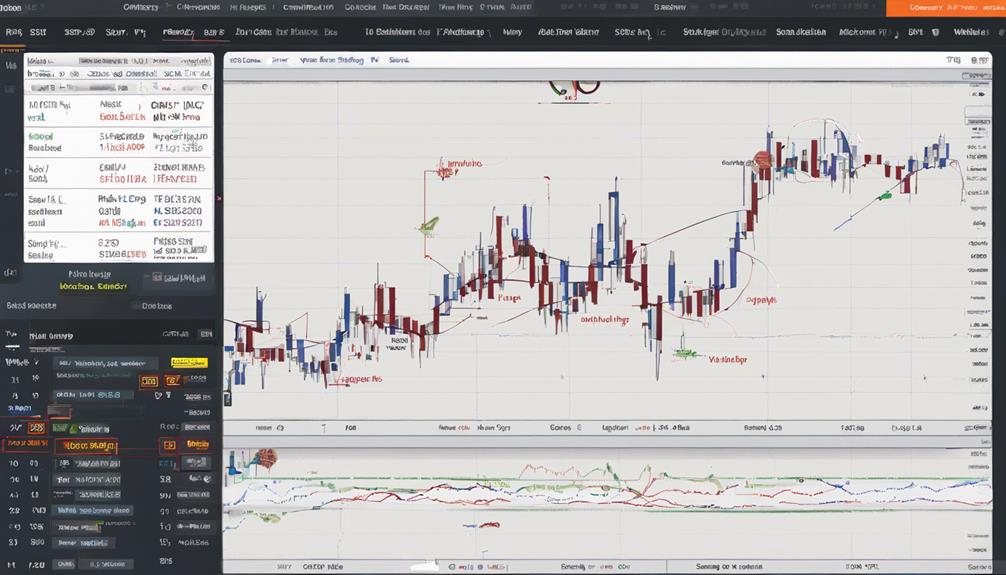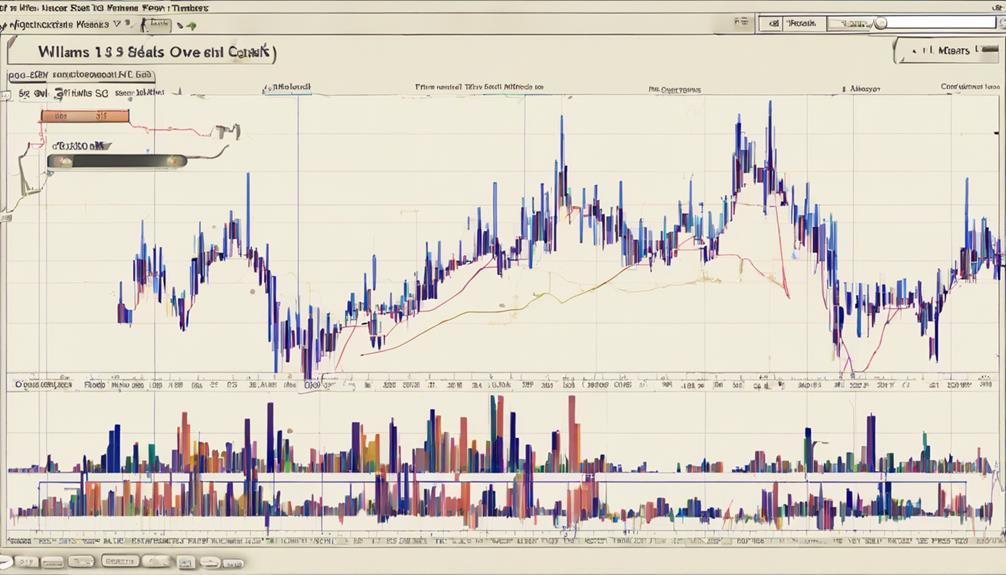A thorough examination of the Williams %R indicator unveils a wealth of information crucial for traders navigating the financial markets. This powerful tool goes beyond simplistic price movements, offering intricate insights into market dynamics and potential turning points.
By uncovering overbought and oversold conditions, traders can strategically position themselves to capitalize on emerging trends and anticipate price reversals.
The intricate nature of Williams %R analysis invites traders to explore a realm of possibilities that could significantly impact their trading decisions.
Importance of Williams %R Indicator
The Williams %R Indicator stands as a cornerstone in the realm of technical analysis, offering traders a critical tool for pinpointing momentum shifts within market trends. By calculating the relationship between the current closing price and the high-low range over a specified period, Williams %R provides traders with valuable insights into the strength of a current trend.
This indicator is particularly useful in identifying overbought and oversold levels, which can indicate potential trend reversals. However, it is essential to note that overbought or oversold readings from Williams %R do not guarantee immediate price reversals. Traders should use this information in conjunction with other technical analysis tools to confirm signals and make well-informed trading decisions.
The importance of Williams %R lies in its ability to assist traders in understanding market momentum and identifying potential trading opportunities while providing a framework for confirmation and validation of market trends.
Interpretation and Application in Trading

Given the foundational role of the Williams %R Indicator in technical analysis, understanding its interpretation and practical application in trading is paramount for traders seeking to leverage its insights effectively. The Williams %R helps identify potential trade signals and trend reversals by indicating overbought and oversold levels.
Traders utilize this indicator to spot momentum failures in both uptrends and downtrends, aiding them in making informed trading decisions. By comparing a stock's closing price to its high-low range over a specific period, traders can determine the current position relative to prior highs and lows. Readings falling between -20 and 0 suggest overbought conditions, while readings between -80 and -100 indicate oversold conditions.
It is essential to note that while the Williams %R can be a valuable tool, it should be used alongside other indicators for confirmation due to the potential for false signals and limitations in predicting price reversals.
Identifying Overbought and Oversold Conditions

Identifying overbought and oversold conditions plays a critical role in utilizing the Williams %R Indicator effectively in technical analysis and trading strategies. The Williams %R indicator identifies overbought conditions when readings range between -20 and 0, signaling a potential downward reversal, while oversold conditions are recognized when readings fall between -80 and -100, indicating a probable upward reversal.
Traders use extreme readings on the Williams %R to spot potential price reversals, aiding in determining optimal entry and exit points in the market. Understanding overbought and oversold levels is crucial for accurately interpreting Williams %R signals. By recognizing these conditions, traders can make informed decisions on when to enter or exit trades, maximizing profit potential and minimizing risks.
Utilizing the Williams %R analysis to identify overbought and oversold conditions enhances the effectiveness of trading strategies and technical analysis in navigating the financial markets.
Analysis of Williams %R Signals

Analyzing Williams %R signals involves interpreting market momentum and identifying potential trend reversals based on price movements within overbought or oversold territories.
Key Points:
- Identification of Overbought and Oversold Conditions: Williams %R signals indicate overbought levels when readings surpass -20 and oversold conditions when below -80. This helps traders anticipate potential trend reversals.
- Momentum Strength Evaluation: The indicator assesses the current price position relative to the highest high over a specified period, revealing the strength of market momentum. This information aids in making informed decisions on entry and exit points.
- Spotting Trade Opportunities and Failures: Understanding Williams %R signals enables traders to identify momentum failures and pinpoint potential trade opportunities. By utilizing these signals effectively, traders can enhance their strategies and decision-making processes, ultimately improving their overall trading performance.
Enhancing Technical Analysis With Williams %R

Incorporating Williams %R into technical analysis strategies offers traders a valuable tool for identifying key market levels and optimizing their decision-making processes. Developed by Larry Williams, Williams %R is a technical analysis indicator that can generate potential insights into market movements.
By pinpointing overbought and oversold territory, traders can enhance their trading prowess and make more informed decisions. Understanding the primary function of Williams %R in identifying overbought and oversold conditions enables traders to develop a comprehensive trading strategy. This indicator assists in determining optimal entry and exit points, leading to more effective trades.
When combined with other technical indicators, Williams %R can further enhance the overall analysis, providing traders with the necessary information to achieve optimal results. By integrating Williams %R into their technical analysis toolkit, traders can improve their ability to navigate the complexities of the market and increase their chances of success.
Can In-Depth Analysis of the Williams %R Indicator Provide Valuable Insight?
When it comes to understanding Williams %R indicator, a detailed analysis can offer valuable insight. By delving into the intricacies of this technical analysis tool, traders can gain a deeper understanding of market conditions and potential trends. A comprehensive examination of the Williams %R indicator can provide valuable insights for informed decision-making.
Frequently Asked Questions
What Does Williams %R Indicate?
Williams %R indicates overbought levels when readings are between -20 and 0, signaling potential sell opportunities. Oversold conditions occur between -80 and -100, suggesting potential buy opportunities. The indicator aids in identifying market reversals based on these conditions.
What Is the Williams Valuation Indicator?
The Williams Valuation Indicator, or Williams %R, evaluates a stock's closing price in relation to its high-low range. It aids in identifying overbought and oversold market conditions by comparing the current price to the highest high.
What Is the Ideal Setting for the Williams %R Indicator?
The ideal setting for the Williams %R indicator is commonly a 14-period lookback. This duration effectively captures short to medium-term price dynamics, aiding in identifying overbought and oversold levels. Traders find this timeframe balanced for timely decision-making.
What Is the Difference Between RSI and Williams R Indicator?
Williams %R and RSI, though both identify market extremes, differ in scale interpretation and responsiveness to price changes. Williams %R's -20 overbought threshold contrasts RSI's 70-80 range, reflecting unique perspectives on market momentum and conditions.
Conclusion
In conclusion, the analysis of the Williams %R indicator provides traders with crucial insights into market conditions, helping them identify overbought and oversold levels.
By understanding the calculation process and integrating this indicator with other technical tools, traders can make informed decisions and predict potential trend reversals.
The importance of interpreting Williams %R signals cannot be overstated, as it enhances technical analysis skills and improves trading strategies significantly.
